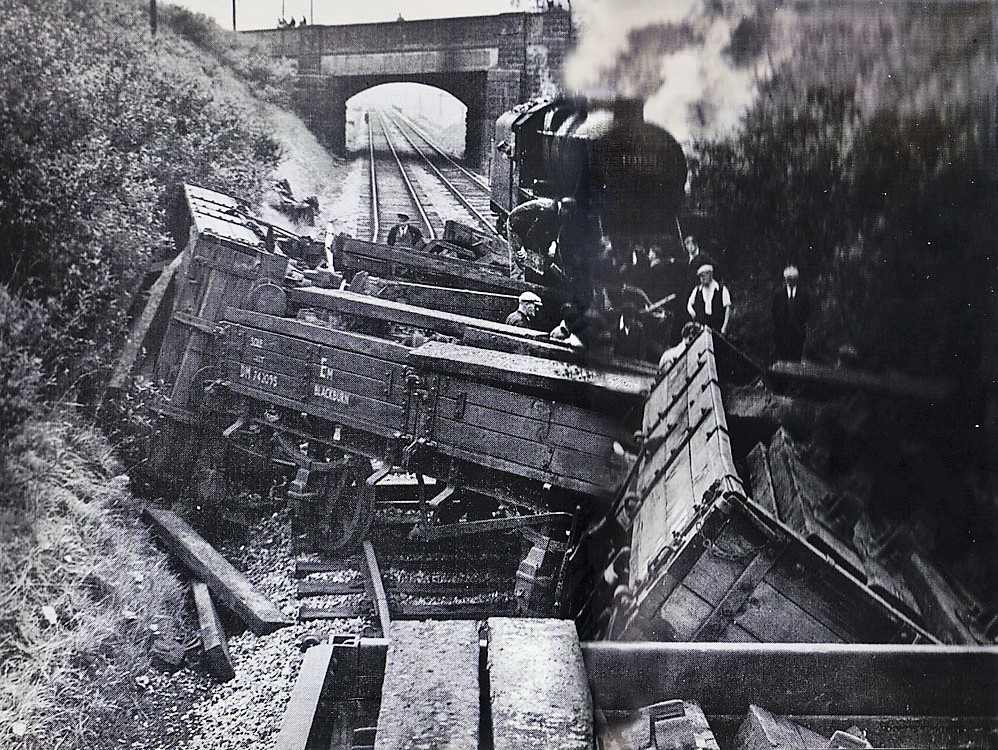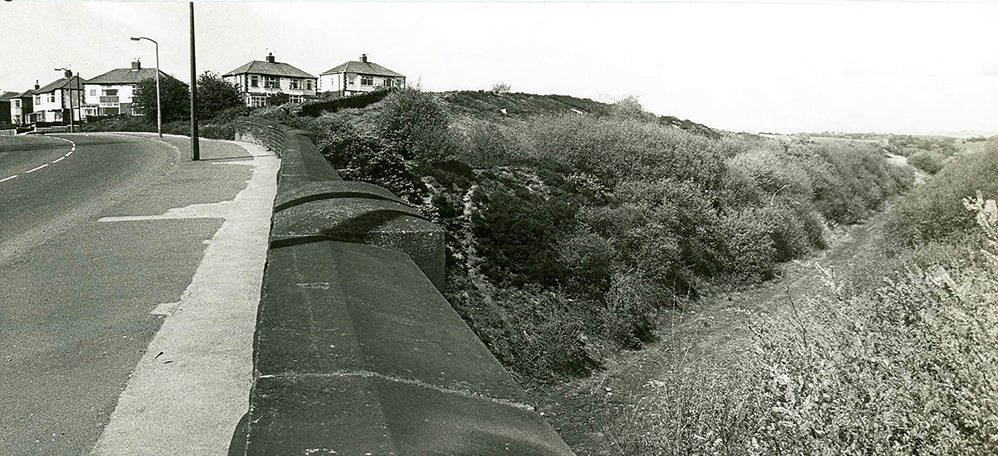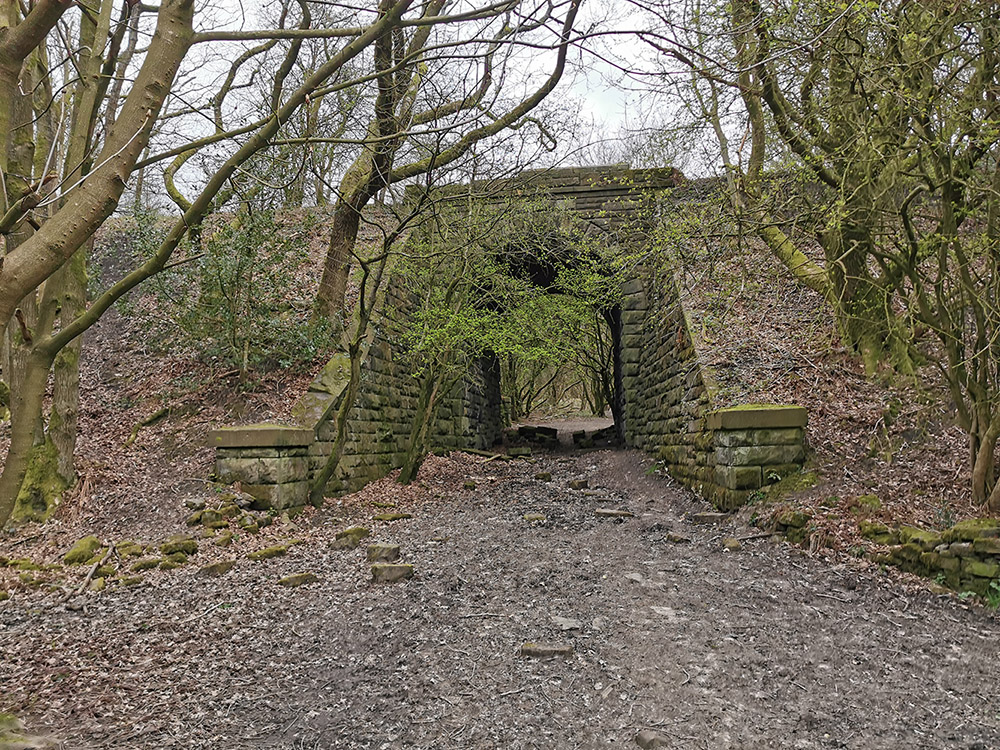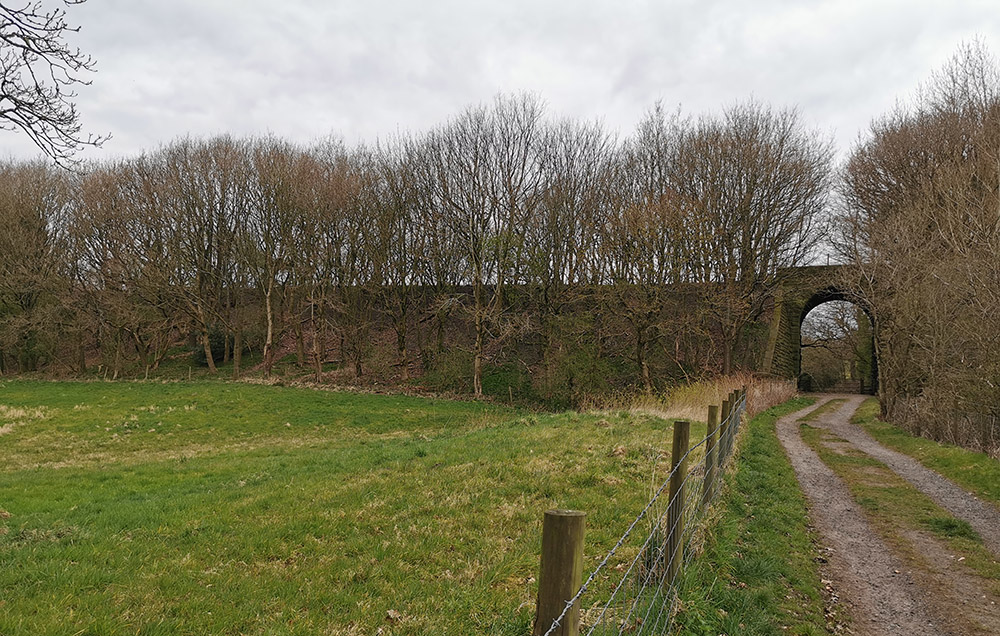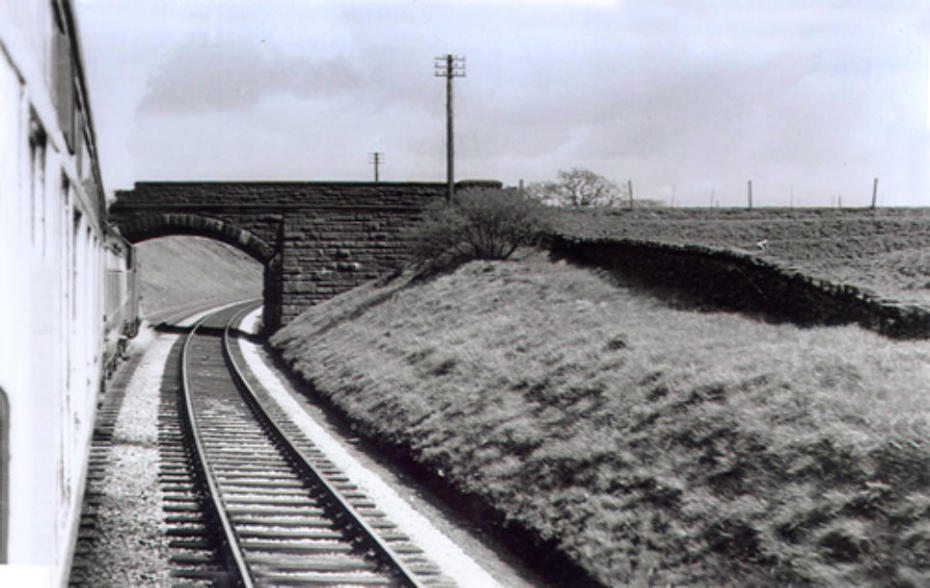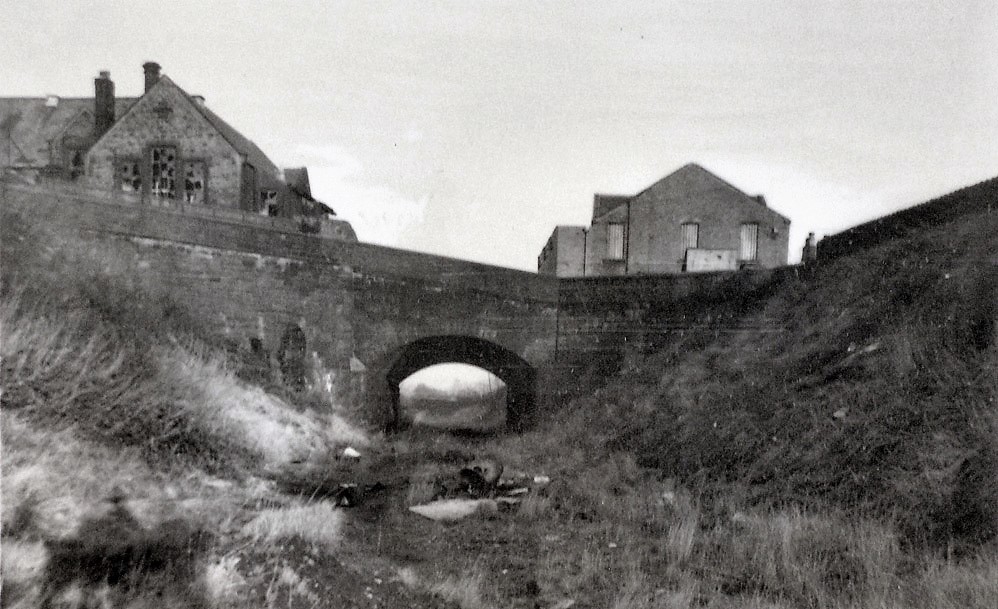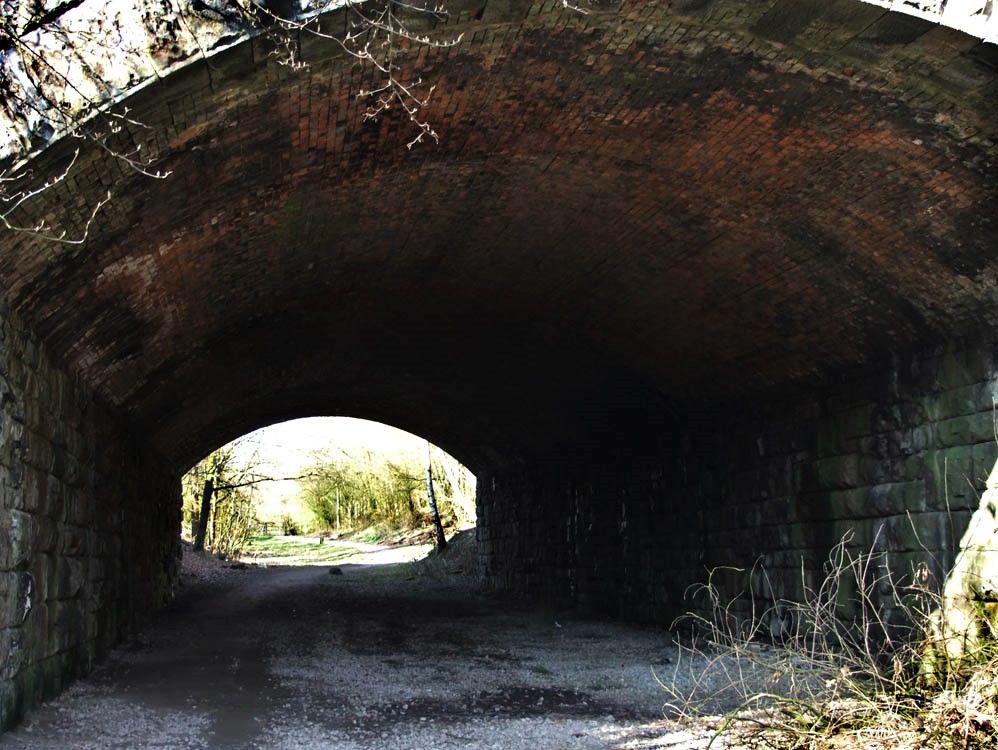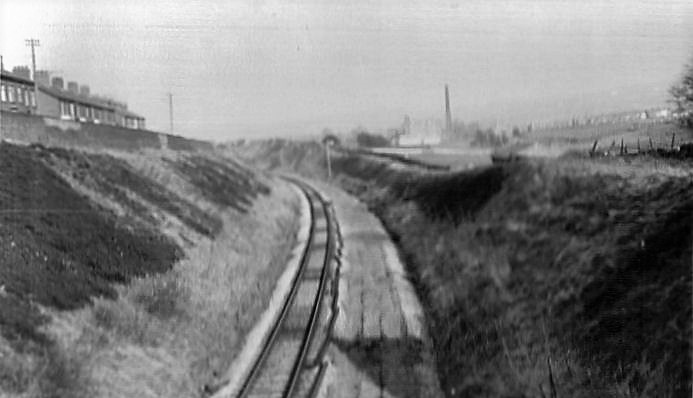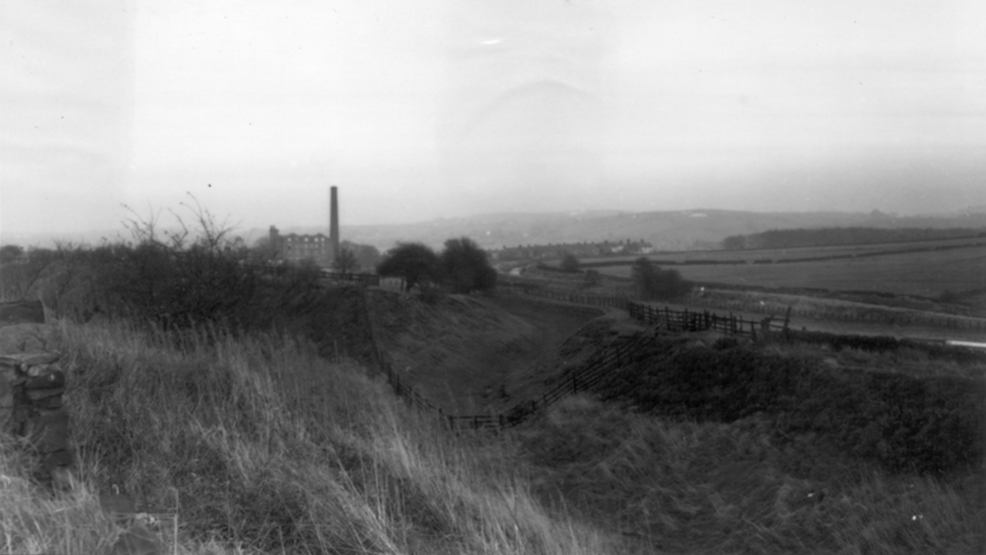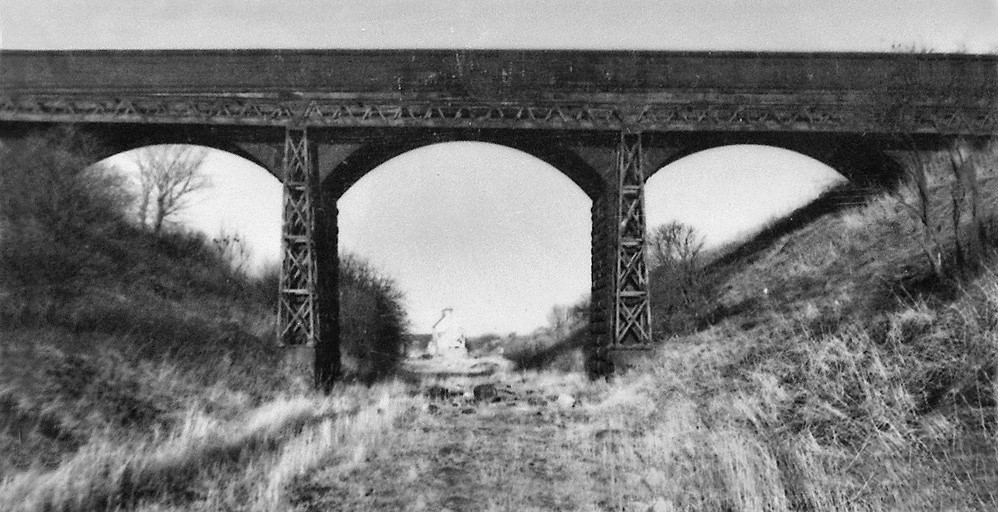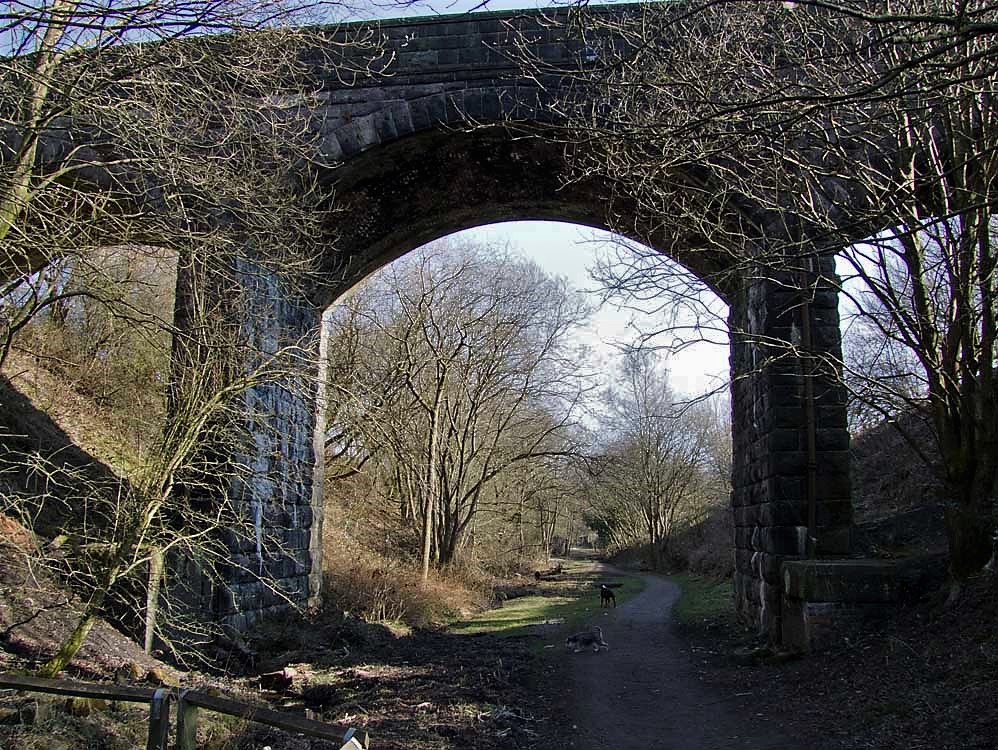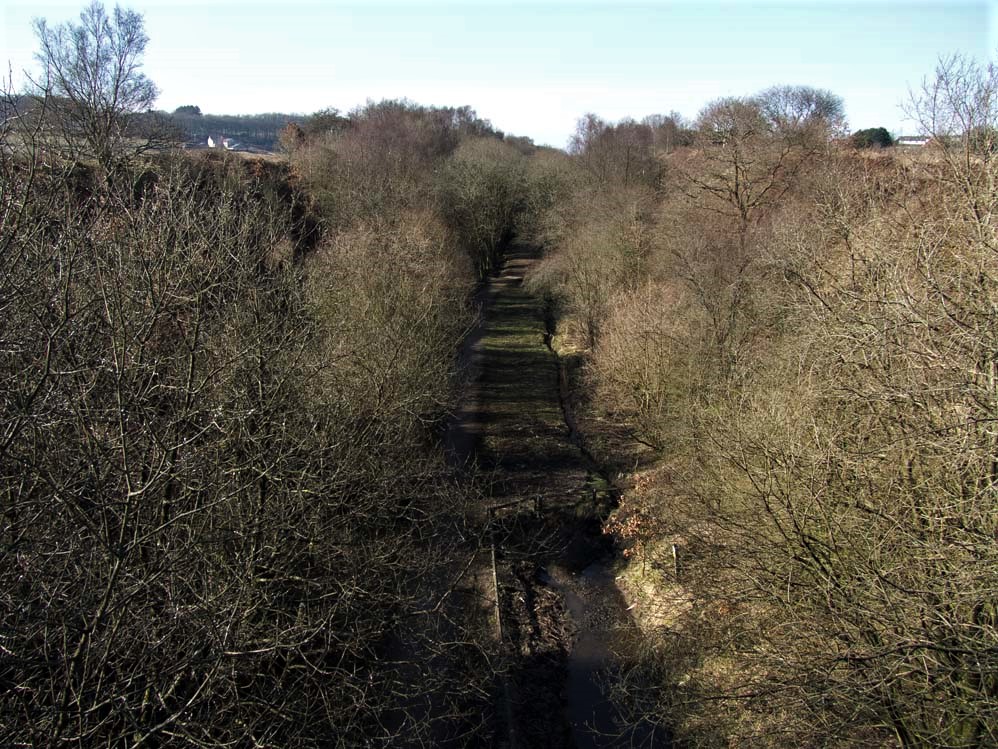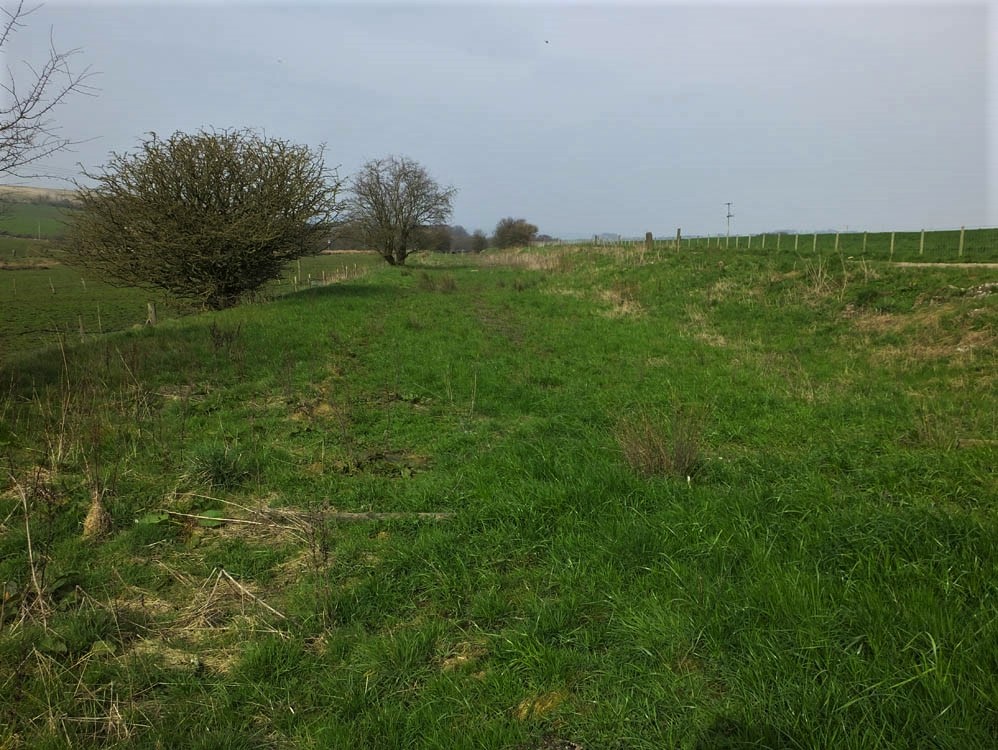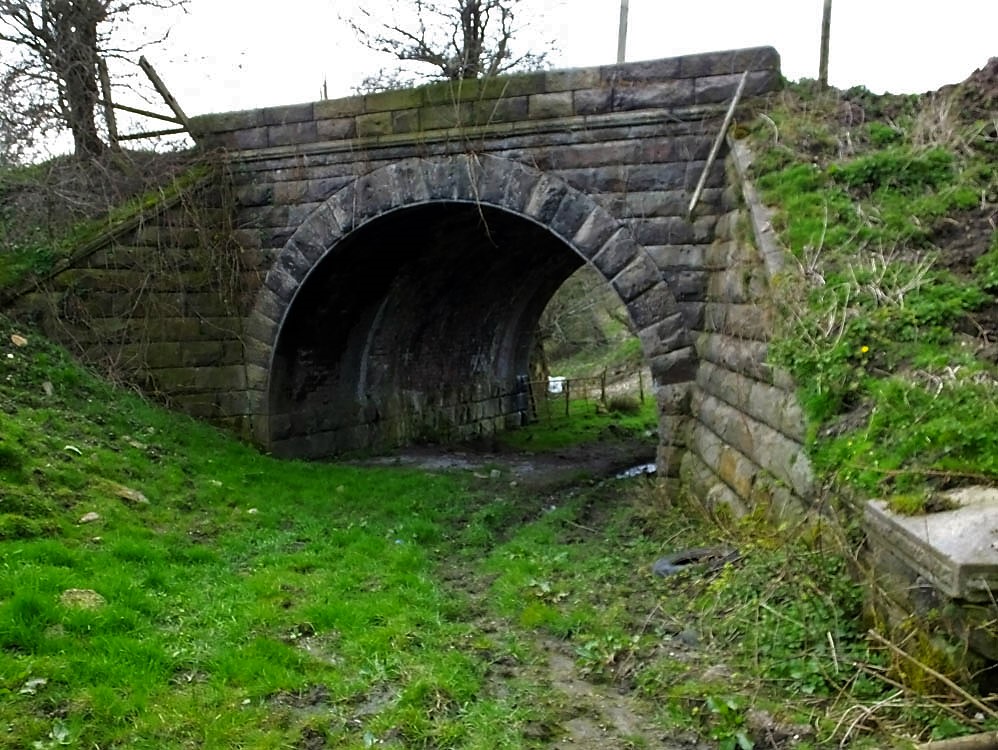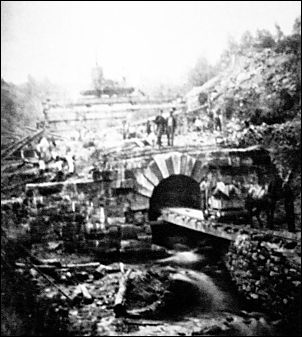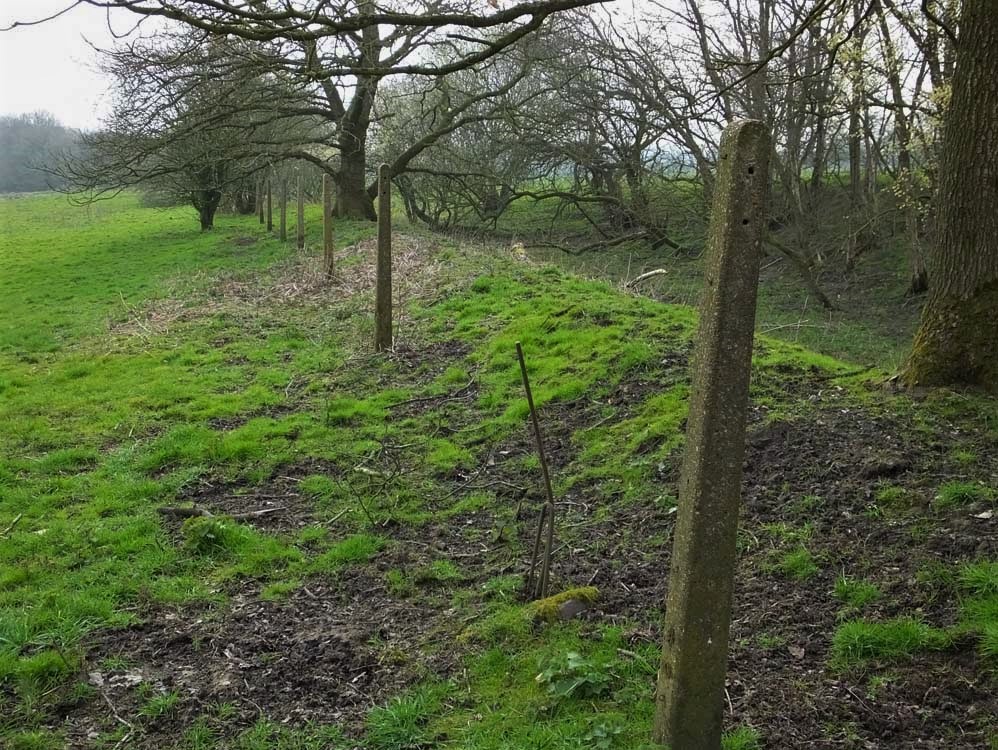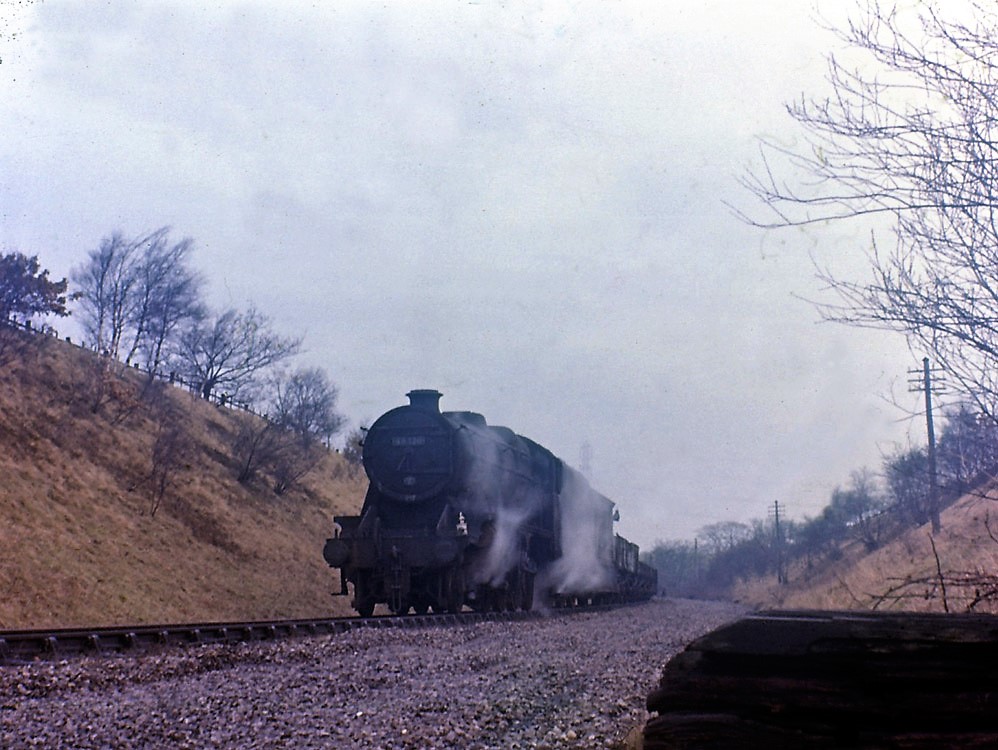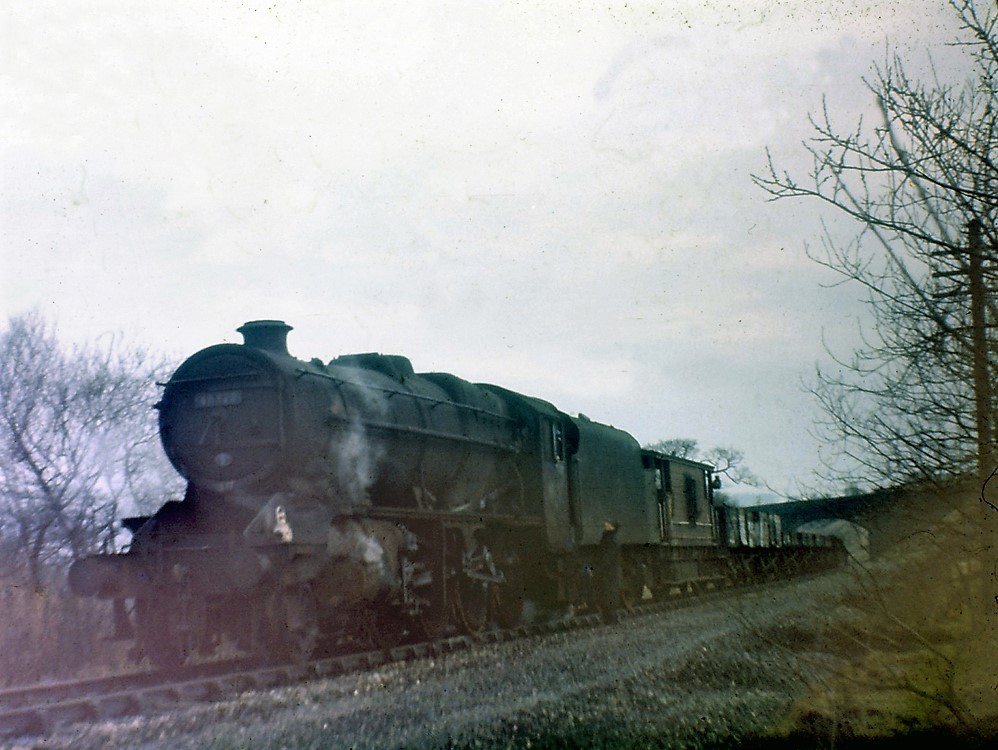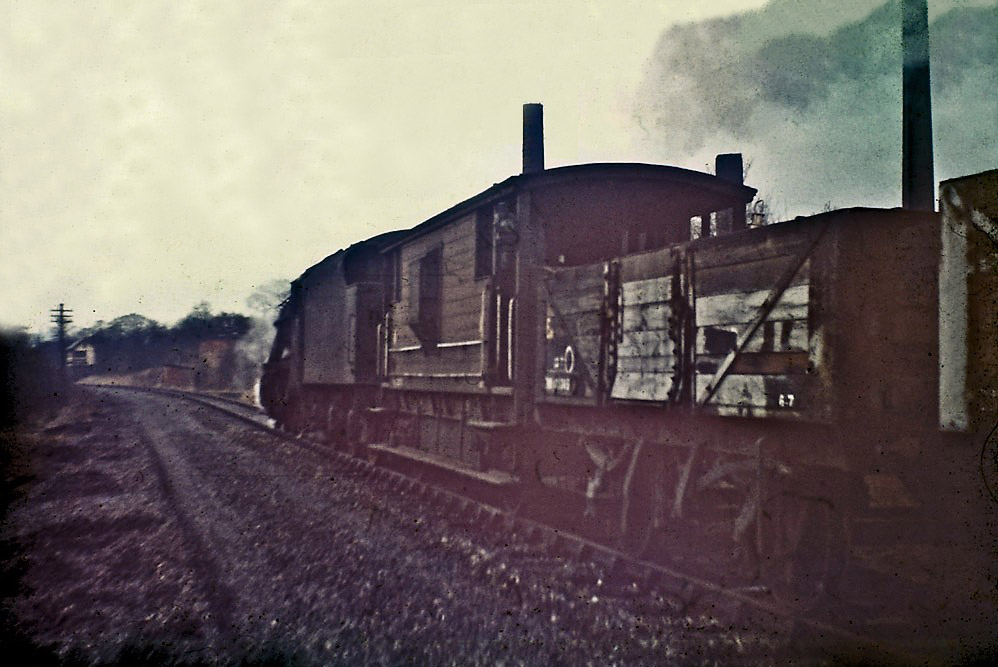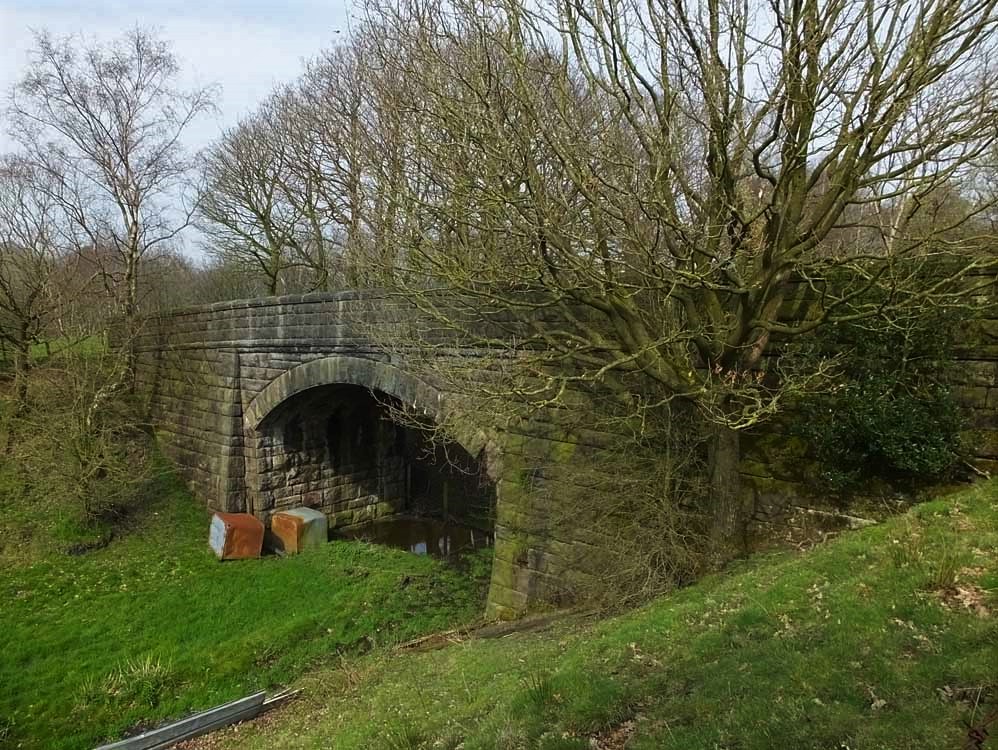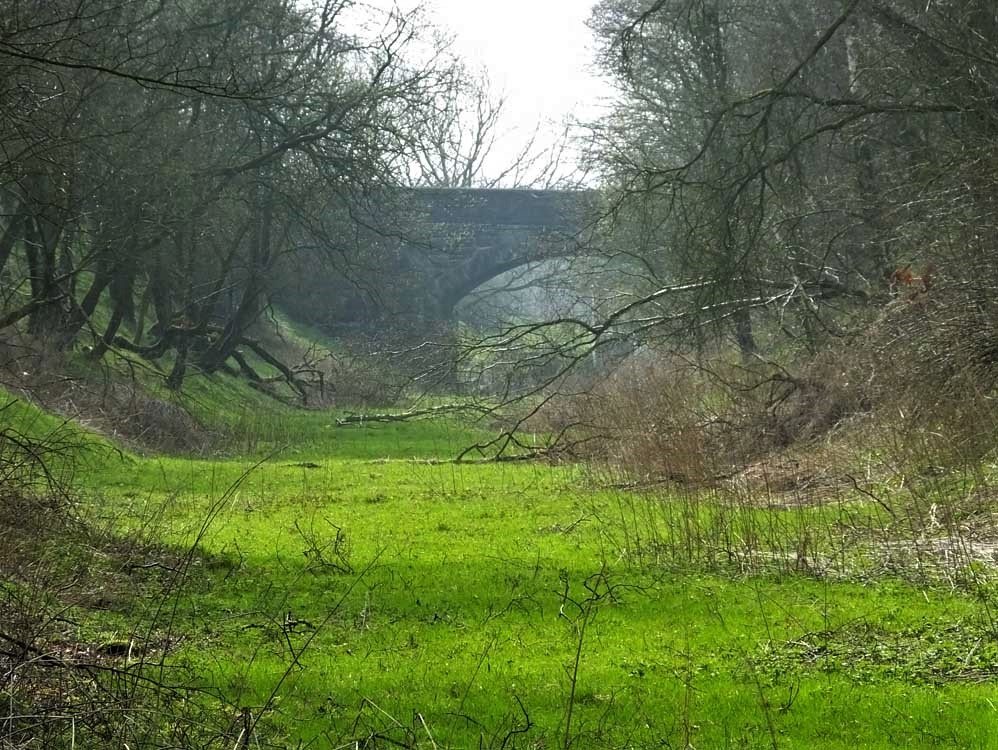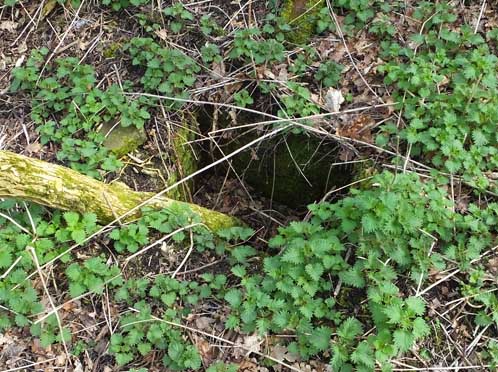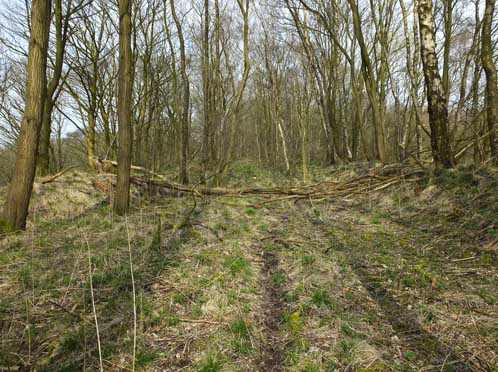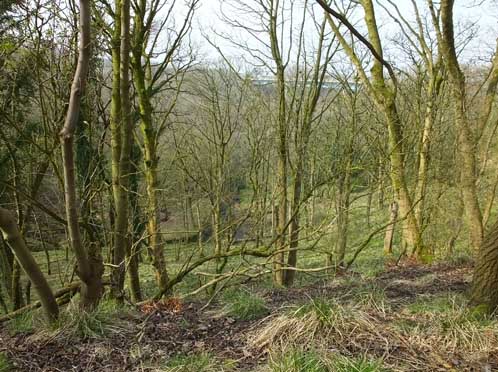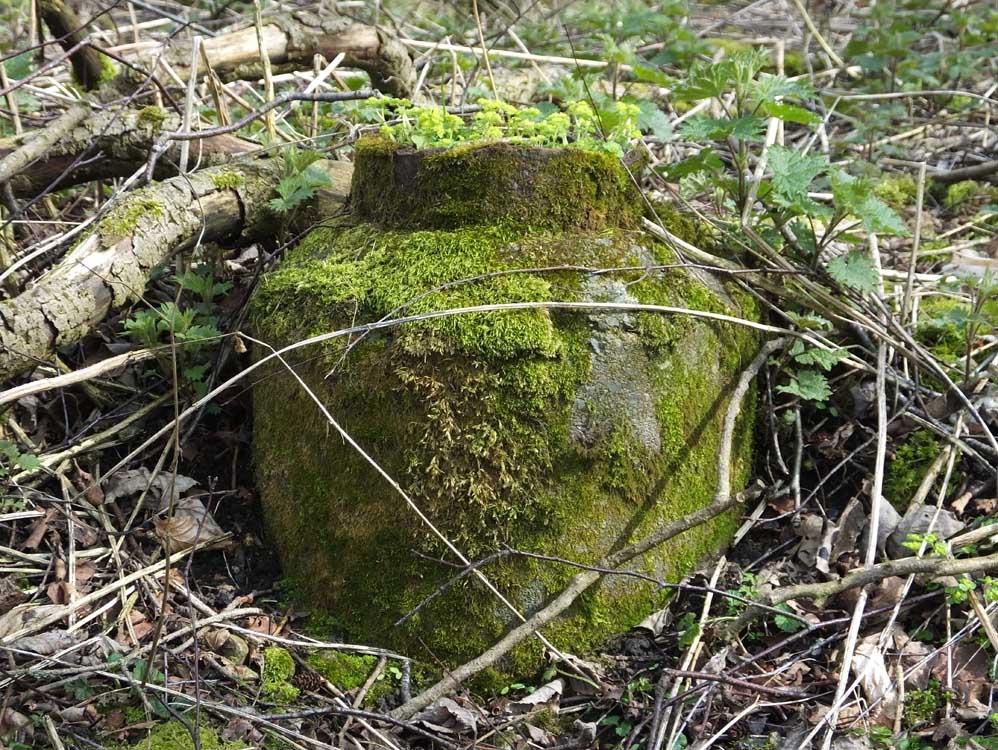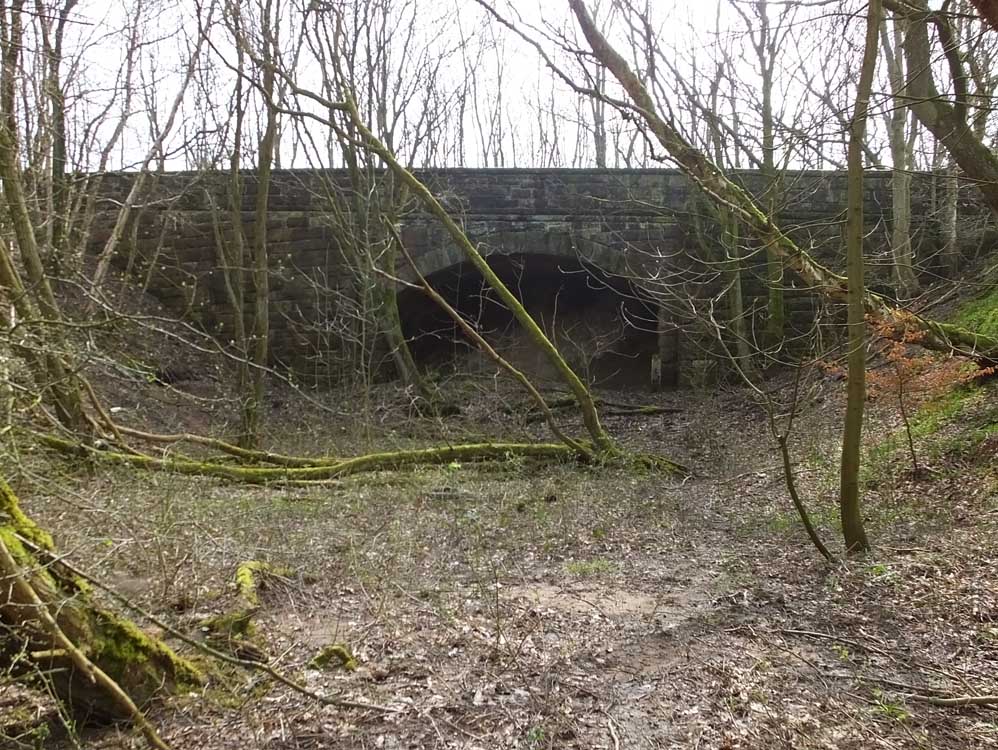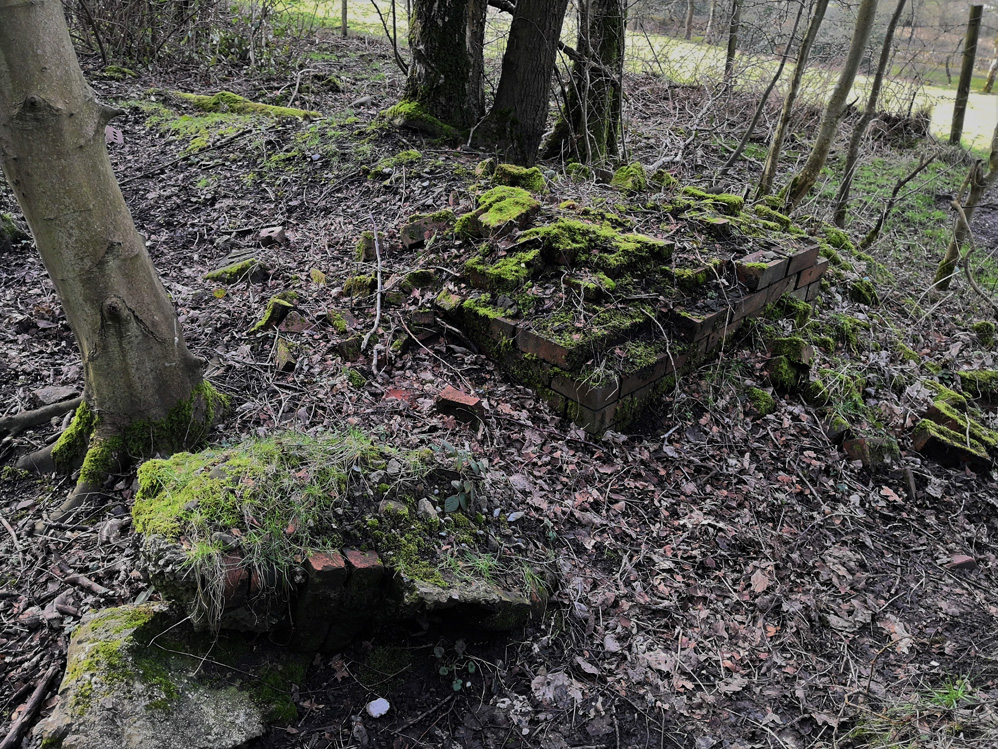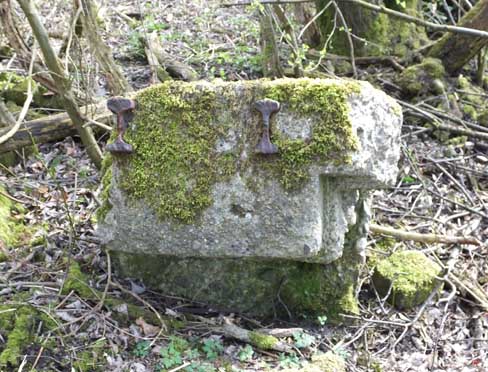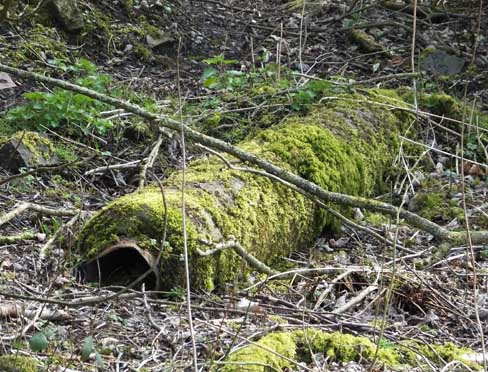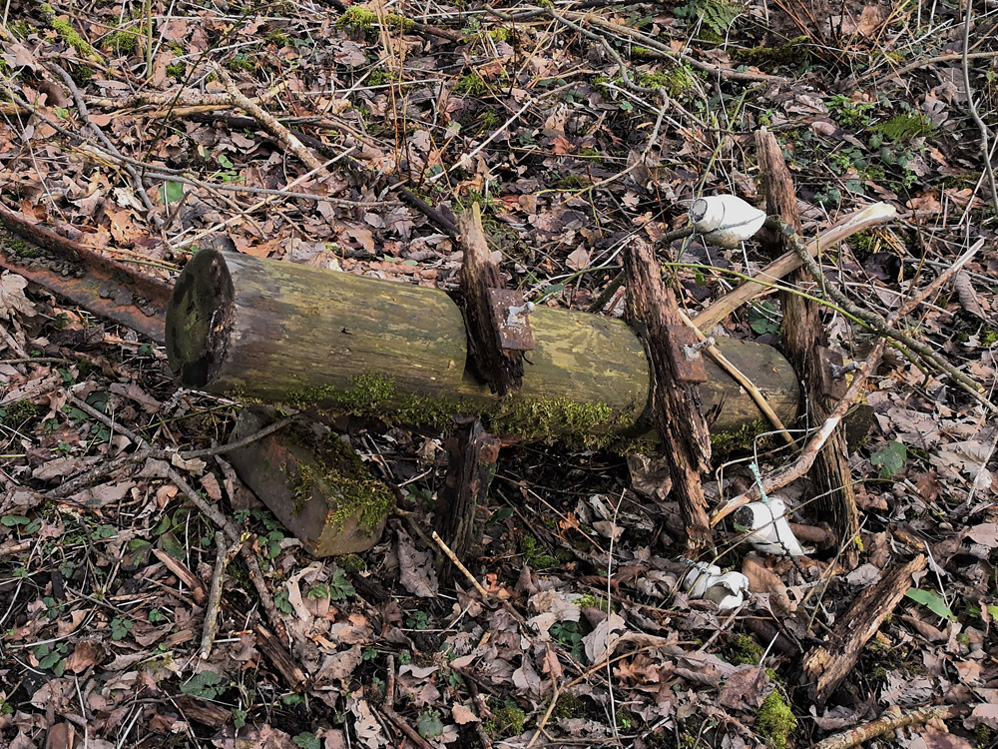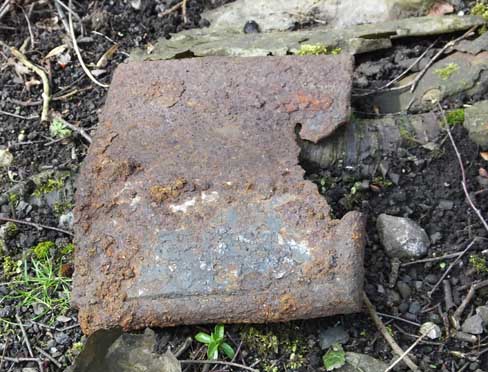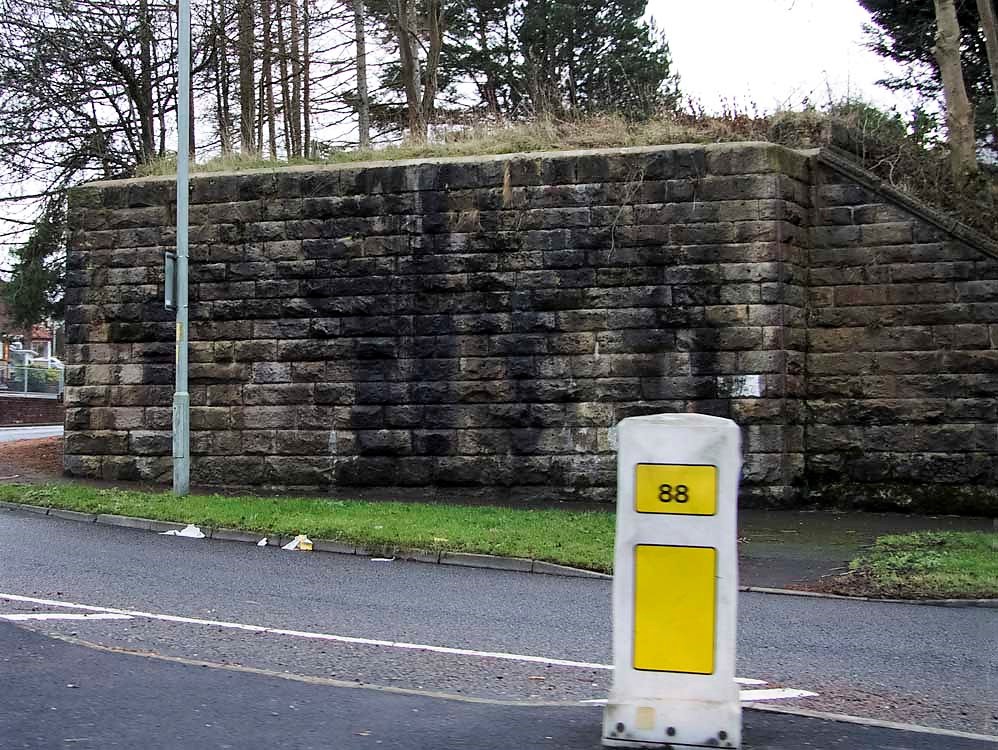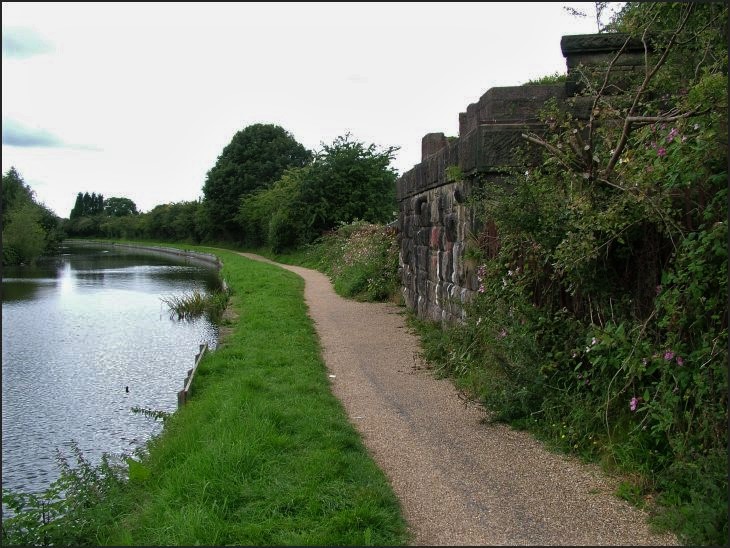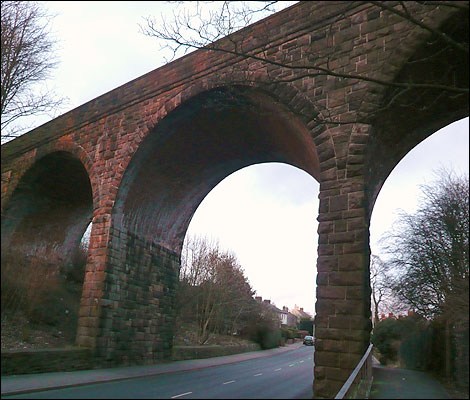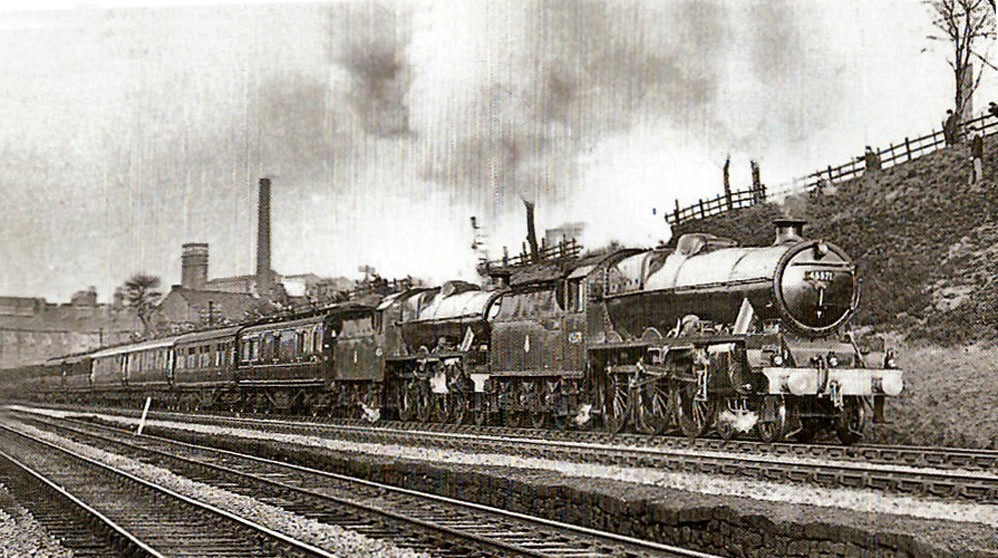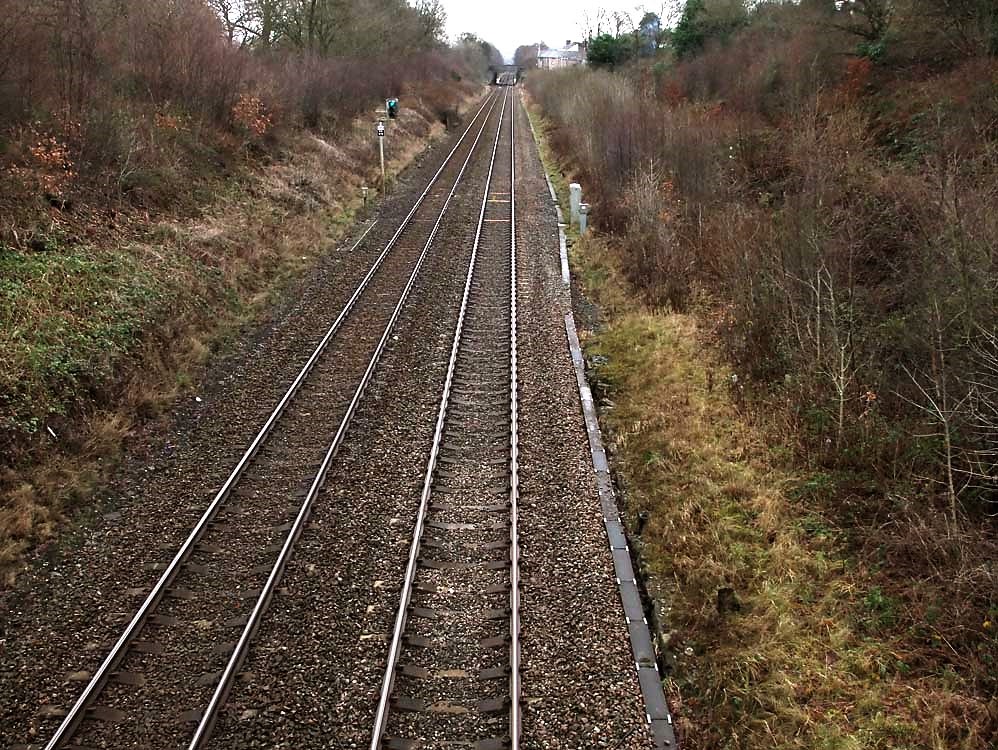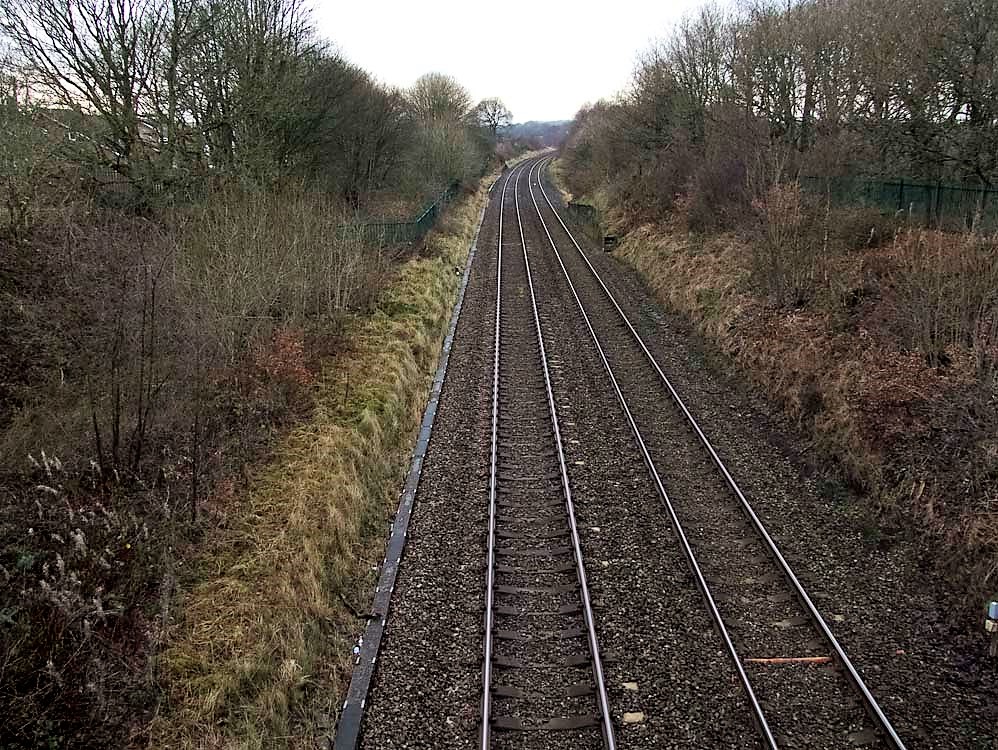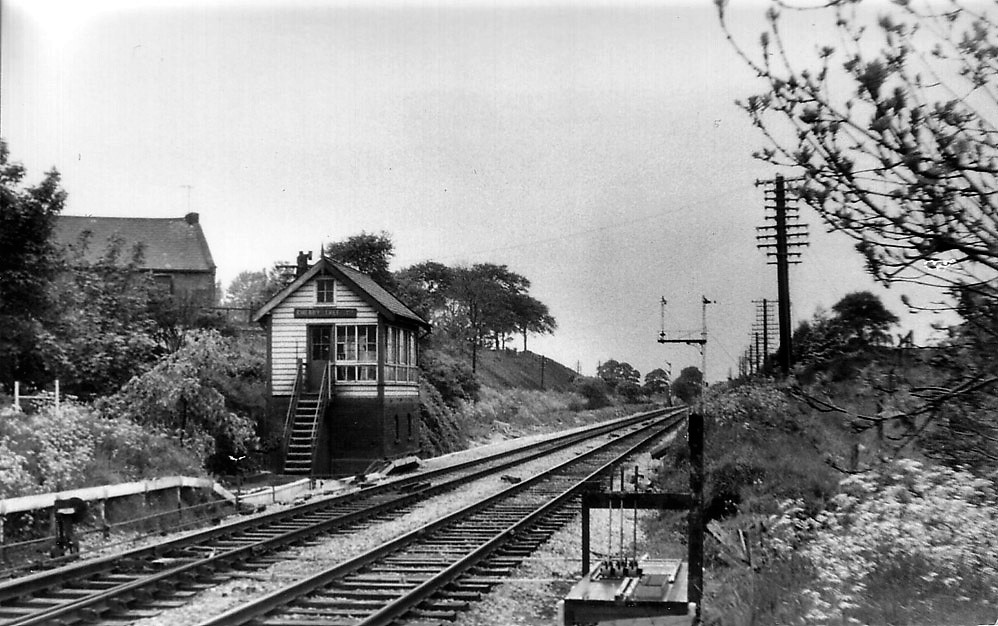|
After leaving Chorley Station and climbing to the top of Thornhill, the line crossed 9 Arches Viaduct. Beyond the viaduct is the mill and its chimney.
The chimney has been demolished but the mill is still there and is now Botany Bay Village shopping complex. The viaduct was blown up in 1968 to make way for the M61
|
| |
|
Last days! Preperations being made for the demolition of the viaduct. (Courtesy John Feenan) |
| |
|
And after the viaduct was blown up this sorry site remained (Courtesy John Feenan) |
| |
|
Derailment east of Blackburn Brow bridge. The wall of 9 Arches viaduct is just visible through the bridge. (Courtesy John Feenan) |
| |
|
This is the bridge in the photo above and shows where the derailment was.
|
| |
|
| This and the following bridge are located between Blackburn Brow bridge and the bridge on Tithe Barn Lane, Heapey |
| |
|
| Bridge west of Tithebarn Lane, Heapey |
| |
|
The 11th April 1957 was a nice sunny day as HC Casserley and his son RM Casserley took the train from Chorley to Blackburn, here passing under Tithebarn Lane bridge as it nears Heapey. The train is being pulled by 42473, a Stanier 2-6-4T built in Dec 1936 for the LMS. Mr Casserley was a prolific railway photographer and wrote many Railway books.
(This photo courtesy of the HC Casserley collection - © RM Casserley, and whom I wish to thank for allowing me to use his Father’s photographs) |
| |
|
The track bed as it approaches Brinscall about 40 yards north of the Brinscall Hall Printworks siding. The wall and window sill are from an old house built before the railway came through
|
| |
| |
The short tunnel that goes below Bury Lane, Withnell. This photo was taken in 1977, eleven years after closure of the line. The school on the left of the bridge was knocked down and today it is the entrance to a residential estate. Photo courtesy of Steve Williams - Local Historian
|
| |
|
Looking through the tunnel back towards Brinscall
|
| |
|
1967 - the view from Bury Lane Bridge. By 1967 the line had closed and the Chorley bound track had been lifted (Photo courtesy of Steve Williams - Local Historian)
|
| |
|
|
| |
|
This large 3 arched bridge is near Withnell Station. This was taken in 1977. Note he lattice framework in front of the viaduct. Withnell Station is in the distance
|
| |
|
This was the bridge in April 2013. The bases for the framework are still there (see picture above), but looks more like it did when it was built
|
|
The trackbed and view looking towards Withnell from the top of the bridge .
|
|
This is the trackbed today as viewed looking north from the bridge at Withnell Station
|
|
After leaving Withnell Station, trains would cross this bridge as they headed towards Roddlesworth. This bridge is by New Close Farm, Withnell.
|
|
|
|
Roddlesworth 1867
This is two years before the line opened. It was ,however this stretch of line that caused delays to the opening and caused several engineering problems crossing the many brooks and valleys in this area |
|
| |
|
The line then ran through green fields towards the Withnell Brick Works. Even today the concrete railway fence posts survive
|
|
Feb 1967 The line is officially closed now. In this picture No 48320 is pulling an engineers train. Bottom right is a pile of sleepers from the lifted Chorley bound track( © Tony Gillett )
48320 was a Stanier 2-8-0 design. Built at Crewe works - it came into service in February 1944 and was withdrawn in March 1967, making this journey one of its last workings. It was scrapped in October 1967
|
|
1967 and 48320 is stationary whilst the driver is in conversation with a man on trackbed ( © Tony Gillett )
|
|
48320 pulls away with its engineering train towards Withnell Brick Company. Note the three chimneys behind the train ( © Tony Gillett)
|
|
I think this is the bridge in the photo above. It is at Grid Ref 644 238and is near Bradley Farm. This bridge is just north of the Withnell Brickworks siding.
|
|
Looking back (south) to the bridge in the photo above. The trackbed here is excellent
|
|
|
|
Old drainage grids are still to be found in this section of trackbed |
| |
|
|
|
Suddenly a fence crosses the track and on the other side the trackbed becomes overgrown as it crosses a high (50' ) embankment as it approaches the present day M65.
|
|
The base of a signal post in situ Grid ref SD647 242) on the high embankment . The embankment now ends abruptly with the M65 crossing the track bed. In doing so the cutting that followed the enbankment has been in filled up to the bridge at SD648246.
|
|
This is the bridge at SD648246. Infill can be seen under the arch
|
|
Between the bridge and Feniscowles Station half a mile to the north are the remains of Jed's Hut (see last photo on this page) that had a brick built hearth at the back (above)
|
|
|
|
Rails encased in concrete (L) and another signal post (r)
|
|
Old telegragh pole found between Jed's Hut and Feniscowles Station
|
|
Not sure what this is - but looks like an old sign or cover.
|
|
All that remains of the bridge at Feniscowles Station where it crossed Livesey Branch Road. Access to the station was by the lane to the left of the bridge
|
|
After crossing Livesey Branch the railway then crossed the Leeds Liverpool canal. Like at Feniscowles Station, a wall is all that remains of this bridge also
|
|
This fine example of Victorian engineering carried the line over the A674 on a high embankment which swung round to join the Blackburn and Preston Railway's line at Cherry Tree junction.
|
|
On the 14th April 1955 Queen Elizabeth and the Royal Train used the line, Here seen leaving Cherry Tree Station and just beginning the climb at Cherry Tree Junction on the Chorley Line. The leading engine is 45571 South Africa which entered service on 17th September 1938. It was withdrawn on 15th June 1963 and cut up at Crewe on 31st July 1963
|
|
This view is looking east towards Cherry Tree Station. The train in the photo above would have been over to the right where the grass and bushes are
|
|
Now looking west, the Chorley line peeled away to the left beginning the long climb to Feniscowles, Withnell and Brinscall stations
|
|
Cherry Tree Junction 2nd June 1972 - after the signal box points created a four track stretch. Just after the signals in the far distance the Chorley line swung left behind the embankment. |
| |

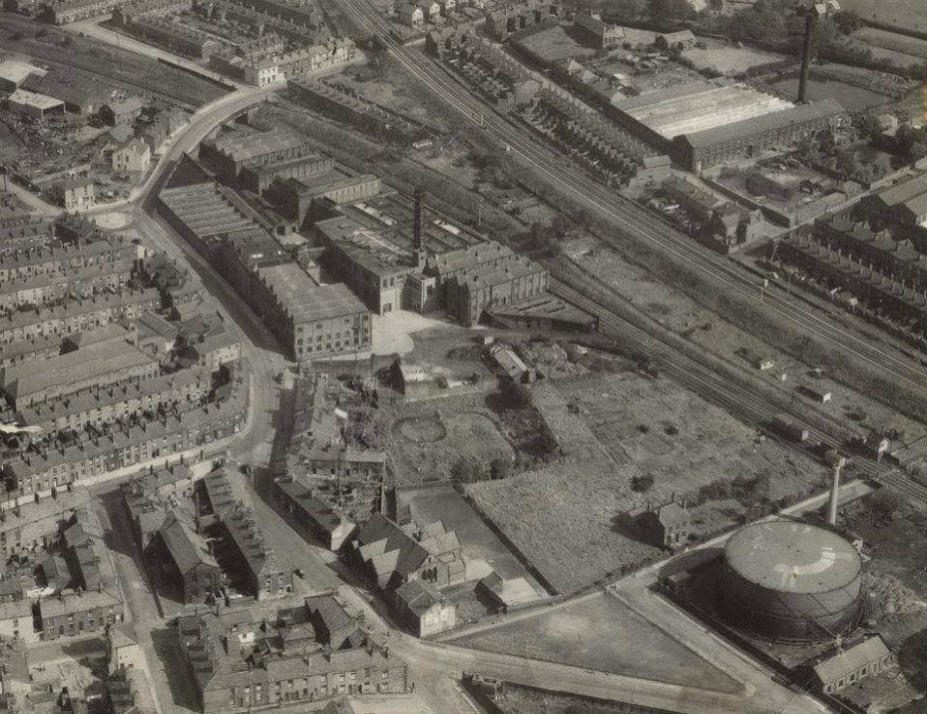
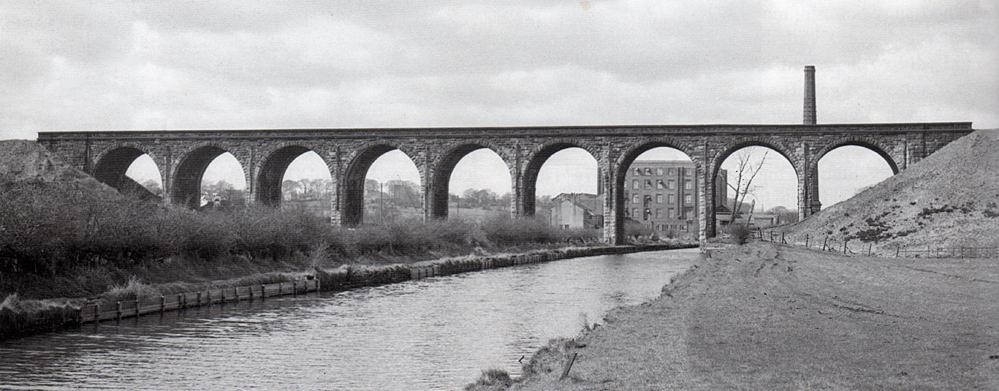
.jpg)

